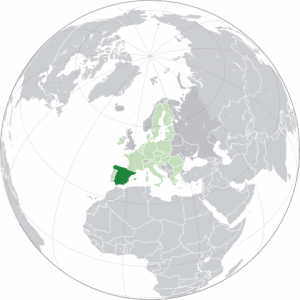In Part 1 of this series we discussed the diversity of the Spanish language and made a short description of US Spanish and Latin American Spanish.
Now we will continue by analyzing the advantages and disadvantages of translating for a specific country. Finally, we will give you a short description of the Spanish spoken in Spain and its differences. We will also make a comparison of Spanish in Spain vs Latin America.
Translating for a Specific Latin American country
Spanish speakers are distributed in over 25 countries. The grammatical structure of the language is shared. Still, there are differences among countries and even among regions in the same country, such as pronouns, verb conjugations, and specific words and expressions.
If you are directing your content to one specific Spanish speaking country, you can take advantage of that to get translations that are aimed straight at your audience.
This is particularly important for translations such as publicity, marketing strategies, social media content, and other advertisements users want personalized experiences that speak to them.
3 out of 4 customers prefer to buy products in their native language. This means that if a potential customer can’t understand the content, they won’t even try to shop and will leave. When translating for advertising purposes; it is highly recommended to focus on the target audience, in this case, the specific country, to increase the desired impact.
As a company, you must do your research and decide what type of Spanish will be the one that meets your needs: either translate your content into Latin American Spanish for a more generic solution or localize it for each target country or region, for a more personalized connection with each audience.
In conclusion: translating for a specific country demands a special effort that is widely rewarded. You can talk to your audience as one of them and make them feel comfortable. That being said, please bear in mind that you will be narrowing the reach of your message to only that country.
Spanish from Spain
Reaching the end of this article, there is one type of Spanish that is as unique as the others: Spanish from Spain.
Let’s start by saying that in Latin American countries, the Spanish language is called español (Spanish) as that is from where the language was brought. However, In Spain, the Spanish language is called Castellano (Castilian), which refers to the historical region of Castile where the language was originated. Spaniards do not call the language español because other languages like Catalan (or Valencian), Galician and Basque, which are spoken in Spain, would also be considered Spanish languages (lenguas españolas).
Spain is the only Spanish-speaking country where the pronoun “vosotros” is used, giving Spaniards an extra ending to memorize for each tense.
Another important aspect of the Spanish spoken in Spain is that it tends to keep loan words to a minimum. While in Latin America we’ll use English words like “Mouse” (as in a computer mouse), in Spain you’ll find the translated “Ratón”.
Moreover, word choices are different in almost every aspect of life.
In conclusion: this type of Spanish is very different from the other types of Spanish discussed in this series. If your audience is in Spain we highly recommend you to localize the content for them and stay away from using a more “generic” or “neutral” approach.
Final thoughts
In this series, we talked about each region having its own particularities, and why choosing the right Spanish might be challenging. Make sure to gather market data and discuss a strategic plan with your language service provider in order to determine what’s the best strategy to localize your content.
Choosing the right provider is no easy task either. Discuss with your potential vendors the qualifications and experience of their translators, their quality assurance process, and their confidentiality.
At Australis we offer comprehensive translation services to advertising agencies, educational institutions, financial and insurance companies, market research companies, medical and health care providers, media and marketing companies, among others. If you still want to learn more about what we do and how we do it, please subscribe to this Blog.
SOURCES:
https://www.bbc.com/mundo/noticias-internacional-47036609
https://cvc.cervantes.es/lengua/anuario/anuario_20/bibang_larre/p04.htm
https://www.languageline.com/hubfs/Downloads/Guide-to-Translation-and-Localization.pdf
https://wpforms.com/digital-marketing-statistics/
https://www.responsify.com/digital-marketing-statistics/
Images:
- By Heraldry – Own work,, CC BY-SA 3.0, https://commons.wikimedia.org/w/index.php?curid=7185231 – modified to highlight the countries
- By Rob984 – Derived from File:Germany on the globe (Germany centered).svg, CC BY-SA 4.0, https://commons.wikimedia.org/w/index.php?curid=70142704



Comments (2)
What are the top spoken languages in the U.S.? | Australis Localization
18 February, 2021[…] 18% of the U.S. population. In fact, there are more Spanish speakers in the U.S. than in Spain, making it second only to Mexico in terms of the Spanish-speaking population. After Native […]
Choosing the Right Spanish - Spanish in USA & Latin America
9 March, 2021[…] In the next post, we will explore when it is appropriate to localize your content for a specific country and discuss the particularities of the Spanish language used in Spain. (Link to Part 2 of this post) […]